Jing
책임기획_Shun Art Gallery, Shanghai
2008_1206 ▶ 2009_0216 / 월요일 휴관
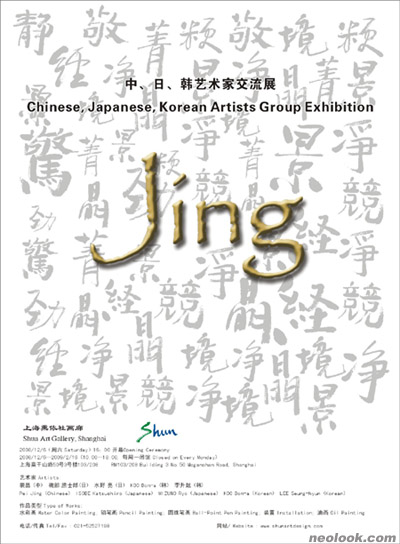
초대일시_2008_1206_토요일_04:00pm
China-Japan-Korea Artist Exchange展참여작가
Pei Jing(Chinese)_ ISOBE Katsushiro(Japanese)
MIZUNO Ryo(Japanese)_구본아_이승현
관람시간 / 10:00am~06:00pm / 월요일 휴관
순아트 갤러리
SHUN ART GALLERY
RM 103/208 Building 3 No.50 Moganshan Road, Shanghai, CHINA
Tel. +86.21.5252.7198
www.shunartdesign.com
수공은 내공이 필요하다. 섬세한 장인의 솜씨는 시간 속에서 예술 분야에서뿐만 아니라 비즈니스 분야에서도 사라졌다. 이제 우리는 어떻게 부드러운 불길이 달콤한 엿기름을 만드는지 순수한 눈으로 바라보기 위해서 발걸음을 늦추고 심호흡을 할 필요가 있다. 가슴으로 생각하고 혀로 말하는 것을 예술가는 그가 창조하는 하나의 특정한 오브제로 사용한다고 한다. ● 이번 기회에 우리는 중국, 일본, 한국, 3개국에서 다섯 명의 작가를 초대하였다. 본 전시에서 유일한 중국작가인 Pei Jing은 섬세한 수채화 작품을 통해 일부의 겉치장적인 정치와 포르노그라피를 향한 작가의 목소리를 담고 있다. 일본작가 ISOBE Katsushiro와 MIZUNO Ryo는 일본적인 이상미(理想美)의 스타일을 따르고 있다. ISOBE는 곤충의 세상을 연필로 그리고 있고 MIZUNO 는 볼펜으로 초자연적인 분위기를 만들어간다. 한국 작가인 이승현은 그만의 독특하고 신비스러운 스타일을 가지고 있다. 순전히 상상적인 오브제, 즉 침투하려는 욕망을 가진 연기가 영원히 종이에, 때로는 유리 위에 침잠한 모습을 구현한다. 다른 한국 작가 구본아는 하늘에서 떨어진 의미 있는 돌을 가지고 영원한 삶의 근원과 순환을 표현하고 있다. ● 본 전시의 제목은『Jing』이다. 이는 정확히 같은 발음으로 ‘소중한’, ‘정결한’, ‘풍경’, ‘존중’, ‘침묵’, ‘거울’, ‘경계’, ‘명백한’, ‘대파’, ‘경탄’, ‘경쟁’ 등등의 여러 중국어 단어를 의미한다. 이 단어는 본 전시에서 각각 어떤 의미를 제시한다. 한편, ‘Pinyin’ (*로마자 번자 형식의 한어 병음)은 어디에도 없다가 지난 세기의 중반에 출연했다. ‘Pinyin’은 여전히 논쟁 중이지만, 본 전시는 현대미술의 현황을 반영하는 예로서 이를 사용하였다. ‘Pinyin’은 인정될 것인가, 아니면 사라질 것인가? ■ Shun
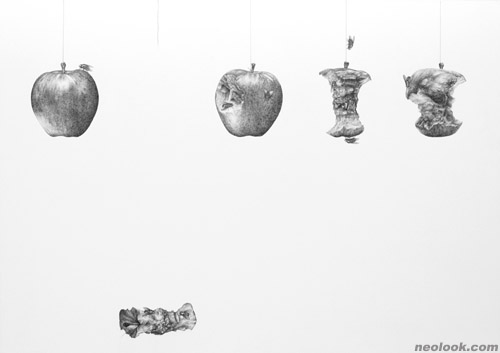
ISOBE Katsushiro_One's self_연필 드로잉_42×59cm_2008
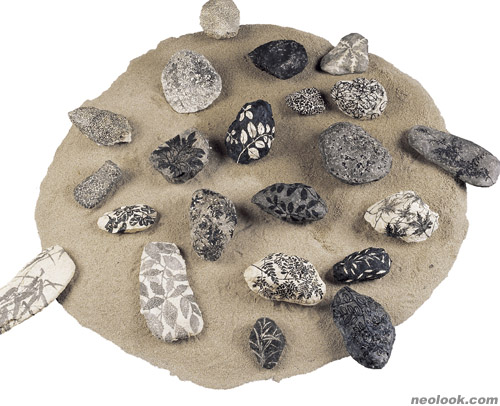
구본아_Wol In Chun Kang Ji Kog-the moon sheds light over one thousand rivers Installation_
한지, 먹, 모래_가변크기_2007_부분
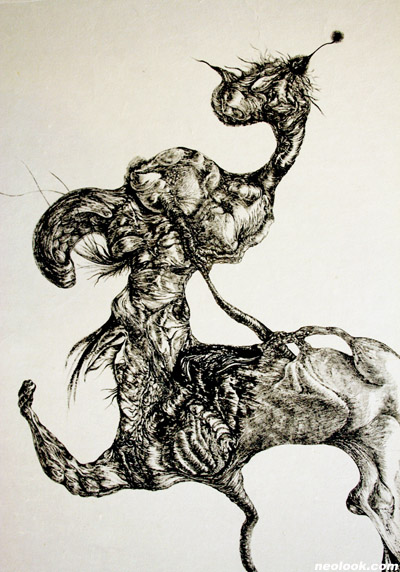
이승현_Cryptozoology_한지에 먹_2007_부분
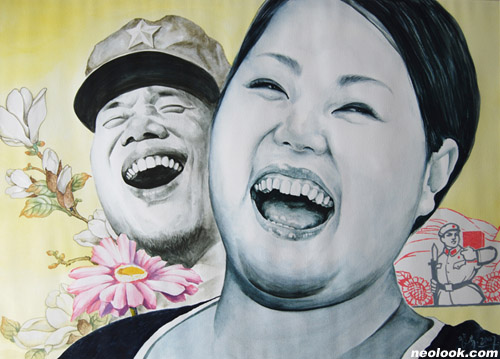
Peijing_Smiling Face_수채_73×154cm_2008
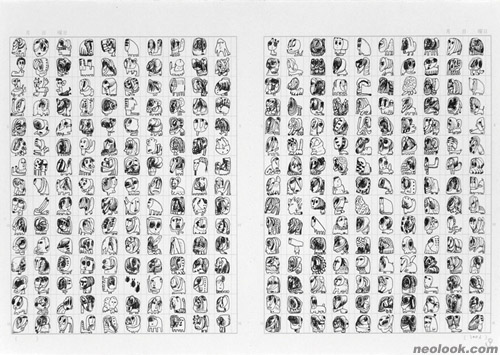
Mizuno Ryo_300 People_종이에 잉크_25×35.8cm_2003
Handwork needs strength. The delicate workmanship wore away through the time not only in the art field, but also in any business field. Now we need to slow down our pace and take a deep breath, to see how soft fire makes sweet malt with pure and back-to-zero eyes. It was said what the heart thinks, the tongue speaks, also can be used on one particular object that created by the artist. ● This time, we invited five artists from three countries, China, Japan and Korea. Pei Jing, the only Chinese artist in the exhibition, wants to tell the world that what he wants to express in his delicate watercolor paintings are some garish politics and pornography. The Japanese artists ISOBE Katsushiro and MIZUNO Ryo continue to follow Japanese beau ideal style, one draws the insect world with his pencils, another builds the weird atmosphere with his ball pens. Lee seung-hyun, the Korean artist, has the unique and mysterious style. A purely and imaginary object or bits of smoke desiring to get through, but rests on the paper (some on glasses) to the end of time. Koo Bon-a, also from Korea, has focused on expressing the source and cycle of eternal life by her meaningful stones dropped from the sky.
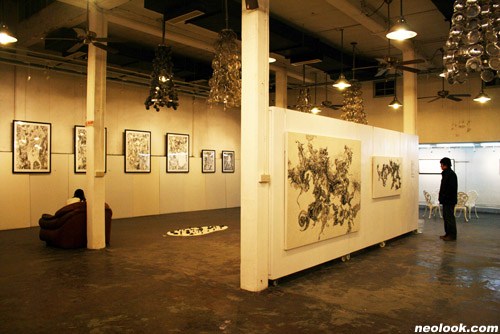
Jing展_2008
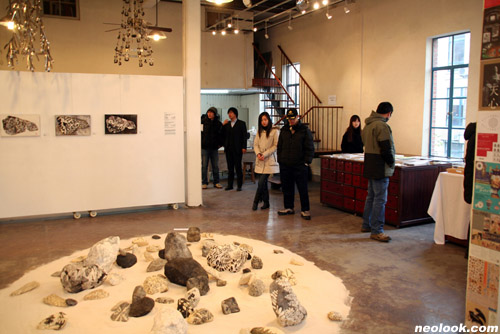
Jing展_2008
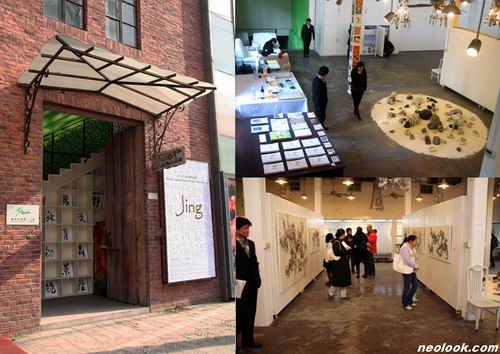
Jing展_2008
The title of the exhibition will be『Jing』. A number of Chinese characters with same pronunciation, such as characters meaning “precise”, “clean”, “scenery”, “respect”, “silence”, “mirror”, “boundary”, ”clear”, “leek”, “wonderment”, “competition” and so on. Any word above has its own presentation in the exhibition. On the other hand, “Pinyin” did not arise from nowhere, but appeared in the middle of last century. Since that “Pinyin” is still in dispute. Here we use “Pinyin” as an example to reflect the current situation of the modern art. Is it to be appreciated or castigated? ■ Shun
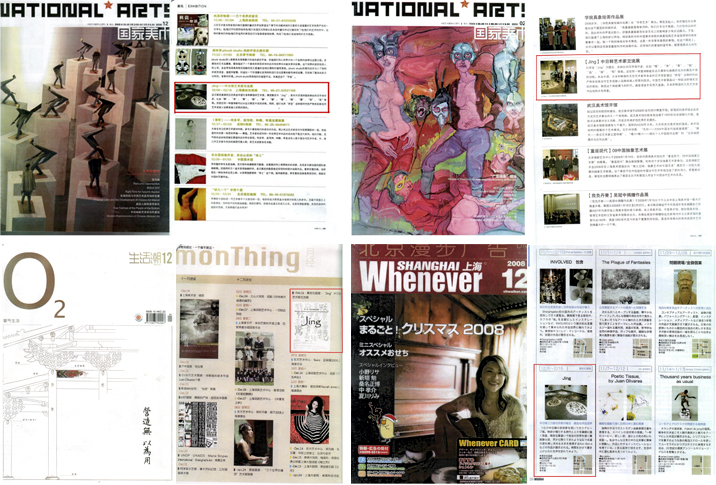
보도자료
The Aesthetics of Lines
China, Japan and Korea form the largest Chinese characters circle in Asia. It's sometimes hard for Westerners to tell Chinese, Japanese or Korean, as they are all Asian. However, above the similarity in civilization, they have their own characteristics in culture respectively.
Paintings and installations from 5 Asian artists are gathered in this group exhibition. Each work consists of unique lines by the artist. It is quite delightful having chance such charming works to people. PEI Jing painted sense of humor and modern times with ink and watercolor, but sharp lines make us consider "how calm lines create such a rich vision", KOO compares time past away to the moon, which makes her work full of poetry, but the lines in details seem open and widen. The installation of putting stones in sand expresses not only Korean culture, but also similarity among civilizations in Eastern nations. Philosophy of Zen can be sensed in works, also reminiscence and greenness. Lines in LEE's work are like both plants and animals. Passion of freedom and Eastern modesty are shown in those extended beautiful lines, bringing us to the journey of imagination. If MIZUNO's work can be interpreted as mixed up lines in worrying mind, then those in Katsushiro's work are clean clear lines between confusion. Horrible but pretty girls in MIZUNO's works reflect his individuality, childishness flashes in composition and blank. Installation of clay by MIZUNO is "new life" generated from his body, as he said. It will be interesting when exhibiting it in a space with mood of temples in Kyoto.
French playwright Jean Cocteau says in his book that lines are lives; each lines waits for the life at every spot it passes.
Lines in art works are mirrors to artists' personalities, opening a new world in the reality we live in. It is the way 5 artists capture lines matters in this group exhibition.
The first impression might be simple and clean because most of works are in only black and white, but there are also a few works with strong and rich color, they together form the spirit of "delicacism". If we can provide a space for people living in this diverse and busy society to relax and comfort them, and time to share, that's the best ting for us. We believe that the exhibition will give people different words when seeing it. - Shun